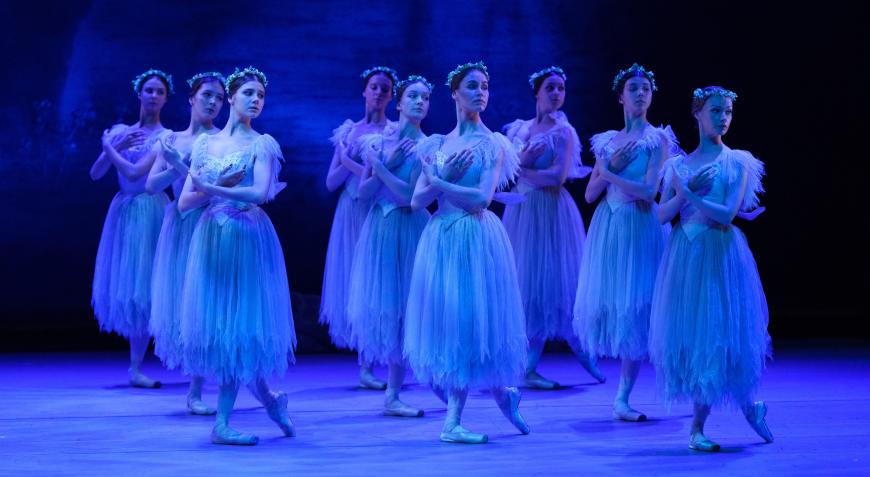
It’s been nearly 18 months since Russia senselessly and brutally invaded Ukraine in a war that continues to grind on, with more than 350,000 Russian and Ukrainian soldiers killed or injured and roughly 14 million Ukrainians displaced. But the Ukrainian people, with their steely beliefs and innate sense of optimism, continue to carry on, whether in their home country or elsewhere.
Indeed, some 60 elite ballet dancers from the national theaters of Kyiv, Kharkiv, Odessa, and other Ukrainian cities fled the war to avoid bloodshed and went to The Hague, all having left friends and family behind. It was there, under the artistic direction of former Dutch National Ballet principal Igone de Jongh, and with the support of local businesses and the Dutch government, that they formed the United Ukrainian Ballet. Living and working at the former Royal Conservatory building, the company has already performed in Amsterdam, Singapore, Sydney, and Taipei, as well as at Washington, D.C.’s Kennedy Center and the London Coliseum.
The troupe makes its West Coast debut June 29 – July 2 at Segerstrom Center for the Arts in Giselle, the Romantic gold standard of traditional ballet. Featuring three different lead casts, the ballet will be accompanied by Pacific Symphony, playing Adolphe Adam’s beloved score under the baton of Gavriel Heine.
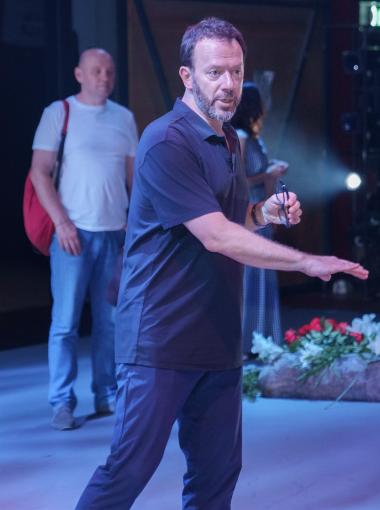
To the famed choreography by Jean Coralli, Jules Perrot, and Marius Petipa, the production introduces new additional choreography by Alexei Ratmansky, who had initially reconstructed Giselle for Moscow’s Bolshoi Ballet in 2019. Ratmanksy’s latest deep dive into the work aligns more with the 1841 premiere at the Paris Opera, making use of notes by Henri Justamant, a 19th-century director of The Monnaie and the Paris Opera, who detailed the ballet’s drama and movements.
With its overarching themes of love and betrayal, death and redemption, this Giselle was recreated specifically for the United Ukrainian company by the 54-year-old Russian-born, Ukraine-raised Ratmansky. (For ballet newbies, the heroine falls for the wrong man, goes insane, perishes, and is reborn as a Wili, a vampire-like creature that takes revenge on her fraudulent beau, only to let him live in the end.) Ratmansky’s version reimagines some of the characters.
Formerly an artistic director of the Bolshoi Ballet (2004–2008) and soon to join New York City Ballet’s as artist-in-residence, Ratmansky, a 2013 MacArthur Fellow, is widely considered one of the world’s greatest living choreographers. He also has a long and storied relationship with the Segerstrom Center, which for more than a decade has presented a number of his world premieres, including American Ballet Theatre’s Of Love and Rage (2020), Whipped Cream (2017), The Sleeping Beauty (2015), and Firebird (2012).
Ratmansky spent eight weeks with the company creating this version of Giselle “because,” he wrote by email, “it is something that [the dancers] know and that requires a large number of dancers, but also because it is not Russian.”
Ukrainian-born principal dancer Alexis Tutunnique was with the Mariinsky Ballet in St. Petersburg from 2013 to 2017 before joining the National Opera of Ukraine but happened to be in Amsterdam touring with de Jongh when the war broke out. He opens the performances in the lead role of Duke Albrecht, who falls in love with the peasant girl Giselle (danced by Ukrainian-born Christine Shevchenko, a guest artist from American Ballet Theatre), despite the fact that he’s engaged to the noblewoman Bathilde.
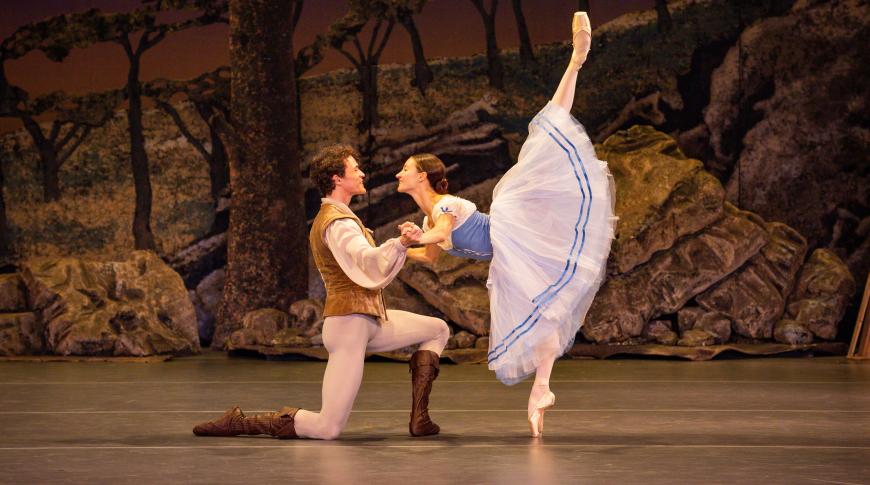
Tutunnique, 29, has performed in a number of Ratmansky’s ballets, including his Cinderella and Firebird, but hadn’t worked with the choreographer personally before this. “It’s the first time, [and] I really enjoy it,” Tutunnique enthused over Zoom from his home in Amsterdam. “Alexei is a very intelligent choreographer — he’s like a walking ballet encyclopedia. He knows everything about ballet in very small details. I enjoy it because he gives you his knowledge about the role.
“For him,” continued the dancer, “it’s very important that with this Giselle, his version is based on the original, but Albrecht’s personality is more readable for [the] audience in this version. It’s more open, so it’s more understandable. I danced Giselle in different versions that you can find in many companies, [but] when I started to work with Alexei, it looks the same, but it’s more deep, more juicy. It’s more understandable for me as a dancer. I find a lot of information for myself — why it’s happening, how it’s happening.”
Tutunnique went on to say that to get a different perspective, he would speak with people in the audience after a performance, “even the ones who visited ballet for the first time. They said, ‘We understand all of your movements; it looks like we can hear what you tell us with your movements, with your miming, the position of your hands and your head.’ People in the audience can hear your movements in this version.”
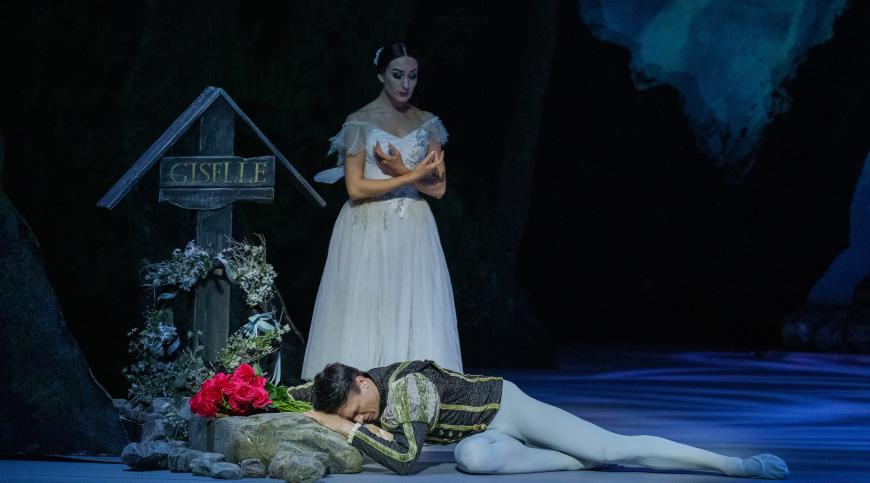
Of his pairing with Shevchenko, Tutunnique said that it’s a good partnership. “She’s [a] very professional ballerina. For me, it’s very easy to dance with her; it’s very comfortable. She’s very calm. There is no drama during rehearsal — sometimes it happens with some ballerinas — [so] I’m happy with that.”
Tutunnique noted that one way to relieve the drama offstage — namely the war in his home country — is to dance. “Dancing helps [me get] through the time very well because dancing is like a meditation. When I’m onstage, it helps me from [going] crazy from the reality. For most dancers, it’s like that. The performance and rehearsal process [are] very helpful for our mental health.”
Tutunnique, who is featured in Dutch filmmaker Miriam Guttmann’s upcoming documentary about the United Ukrainian Ballet, Front Row, added that the war is also damaging to his country’s culture. “I’m in contact with dancers at the National Opera of Ukraine in Kyiv. We have 2,000 seats in the theater, [but] for now only 300 seats are available for [the] audience because it depends how many are in the shelter. For visitors, it’s very bad for [the] economy of the theater because it’s impossible to make money on most performances.”
He explained that alarms routinely go off during concerts and that people in the audience, as well as the dancers, opera singers, and musicians, are required to stop performing and head to the shelter. “But after sitting in the shelter,” he added, “they come back to the audience and the stage and restart.”
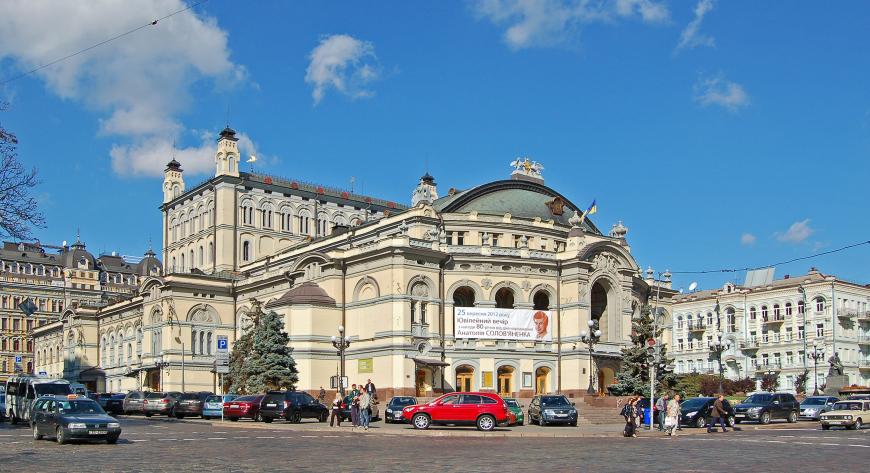
Still, for Tutunnique, having performances is a good sign. “We need to keep positive energy in the city, and we need to give possibility to local people, to be in touch with the theater arts. [Otherwise,] there will be no performance, no audience, and ballet and opera fans and artists will [go] crazy. [Live theater] is definitely good for mental health.”
Ratmansky, who was in Moscow working with both the Bolshoi and the Mariinsky when Russia began its assault on Ukraine, agrees. He also remains hopeful: “The pain and tragedy of the war brings out the best of the national character and defines it for the future generations. I foresee a real renaissance for Ukrainian culture.”
These four performances of Giselle will also be the first time the ballet is presented in collaboration with actor Liev Schreiber and his organization BlueCheck Ukraine. Proceeds from ticket sales will benefit this nonprofit that was created to vet, verify, and fund Ukrainian-led grassroots organizations on the front lines that are providing lifesaving humanitarian aid to victims of the Russian invasion.
The collaboration came about through Elizabeth Segerstrom reaching out to Schreiber, who is not only a fan of dance — he has a daughter who is a ballerina — but also knows Ratmansky, having sat in on a workshop at the Metropolitan Opera where the choreographer was working on Swan Lake and a brief section from Giselle.
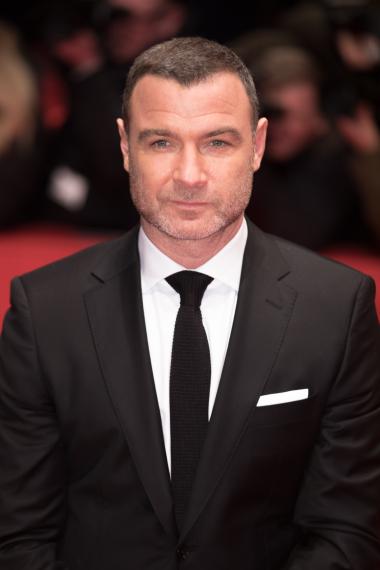
Schreiber, who’s been to Ukraine three times since the war began, although not on the front lines, remarked: “As a fan of dance and ballet, first and foremost [it’s] about a person who expresses themselves profoundly through their body with incredible passion and determination. The tragedy of — not the tragedy, but the sadness around — how brief and fragile life is I think is a perfect subject for this company because no one probably understands that equation better than the Ukrainians.
“Life is short,” added Schreiber, “[so] hold the people that you love close to you; at the end of the day, we should just hold our loved ones close. I think that these dancers and their story are a testament to the resilience of the Ukrainian people. And for me, the shared humanity that is evoked by any piece of art or performance or work reminds us that we all need to be thinking about turning on small lights in dark rooms. That’s hopefully the takeaway that people get from this.”
The lights went out, metaphorically speaking, on Ratmansky, a Ukrainian citizen, when his name was removed from his works at both the Bolshoi and Mariinsky theaters. In effect, he was canceled in Russia. But the merging of art and politics was something he’d never imagined.
“Ukrainians are very proud of their culture that was in the shadow of the Russian culture for too long,” he wrote. “Not only in the shadow and suppressed but also appropriated or canceled. Many people of mixed origins (like myself — my mother is Russian, my father is Jewish from Kyiv) now feel themselves Ukrainian and support Ukraine with all their hearts.
“Russia tries to destroy Ukrainian cultural institutions,” Ratmansky continued. “There [are] horrible statistics — but it will not succeed. Just the opposite — the world is now aware of Ukraine and its culture like never before.”
The choreographer said that he remains in frequent contact with his family. “My family is in Kyiv, [and] my wife’s family is in Kyiv and in Ivano-Frankivsk. They didn’t want to leave Ukraine when [the] Russian army was 30 miles away from where they live at the beginning of the war, and they don’t want to leave Ukraine now, when [the] Russian army shells Kyiv constantly every night.”
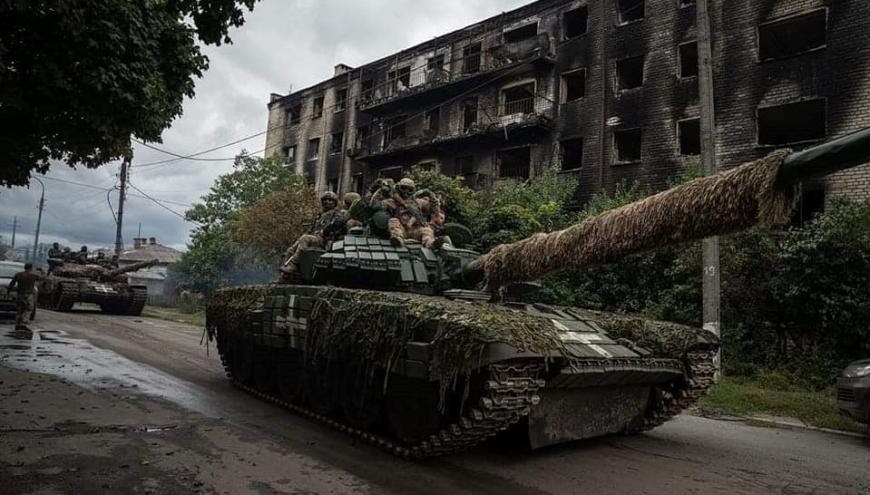
Ratmansky continued: “It is the same steadfast, unbreakable spirit that the other Ukrainians have. They will not surrender. [They] continue living, working, studying, and fighting despite the horrors of this war of aggression that Russian started. I’m very, very proud of them. And I worry about them constantly.”
Schreiber, who said that he’d primarily spent time in Lviv and the suburbs of Kyiv, including Bucha, concurred with this observation about the dedication of the Ukrainian people. “What I was most impressed with is, again, the resilience, the character, and the strength of the people who are living in these horrible conditions — but very much living. Not surviving, but thriving.
“I think,” he continued, “that’s a testament to their character and their culture — their backbone. I think also how long this war has gone on is a testament to that. Most people thought, [and] the pundits were saying, Kyiv would fall in a week — and here we are more than a year later, [and we’re] arguably seeing the tide turn in very real and very impactful ways.”
And while war rages, dance continues. In addition to performing Giselle, the United Ukrainian Ballet, under the banner “Dancing in Defiance,” has also presented three one-act ballets by contemporary choreographers — Ratmansky, Jiří Kylián, and Sol Léon and Paul Lightfoot — and will begin touring the triple-bill program again in October. These performances are vital to Tutunnique and his fellow company members.
“With these performances we pay attention to Ukraine, the problematic war in Ukraine,” Tutunnique emphasized. “We also, with performances and touring to Costa Mesa, have a possibility to work with Liev Schreiber, who collects money for his foundation. It’s important for us, and also, we can popularize our culture and art. Not so many people know about Ukrainian ballet.
“A lot of people in the United States,” added Tutunnique, who has also danced in charity performances in Italy, Germany, and Denmark, “when I talk to them, they were telling me before Russia invaded, ‘We were thinking Ukraine was part of Russia like [the] Soviet Union’ — that we have a similar culture and similar art. It’s good that people are getting more educated in the West with our performances. Creating ballet art, it’s similar [to] ballet art you can see around the world, but it’s different.”
What isn’t different is the sheer beauty, determination, and grace of the dancers in the United Ukrainian Ballet, which will be on full display at the Segerstrom Center next week. As Schreiber pointed out, “[Alexei] is arguably one of the greatest choreographers of modern classical ballet, [and] this is sure to be a really, really exciting and wonderful night.”




